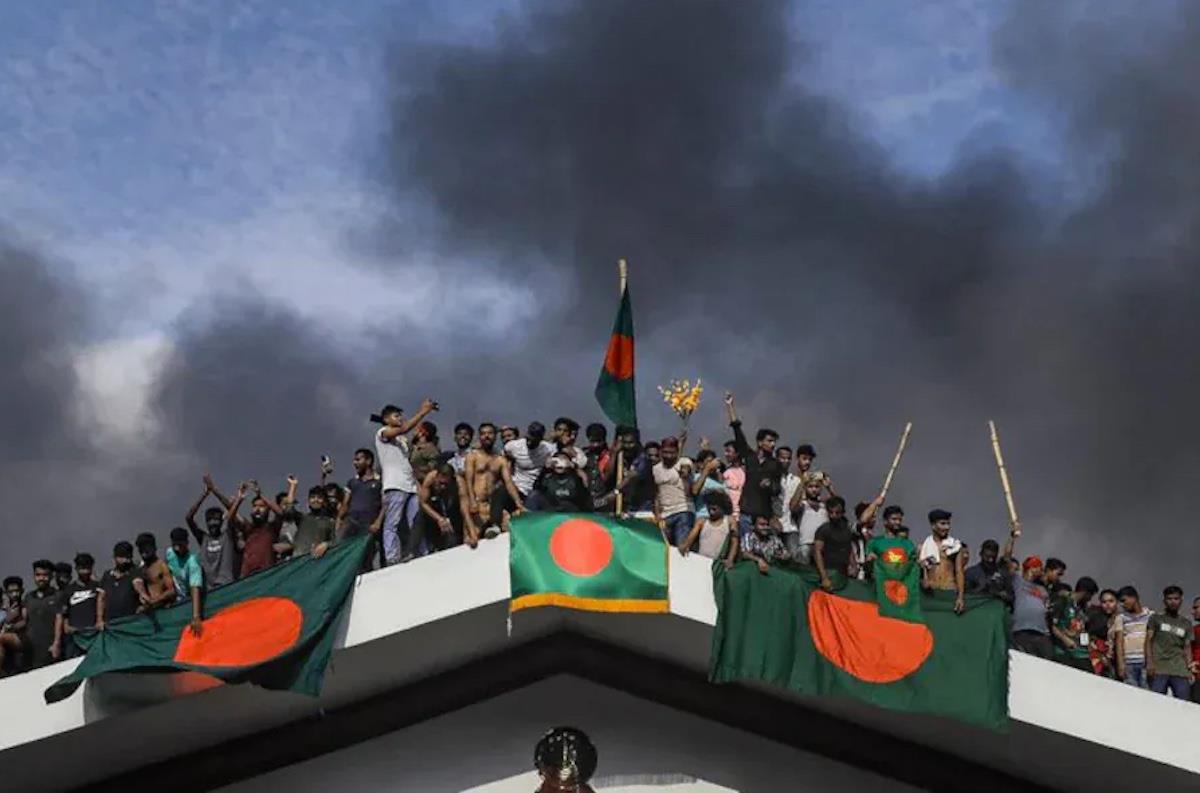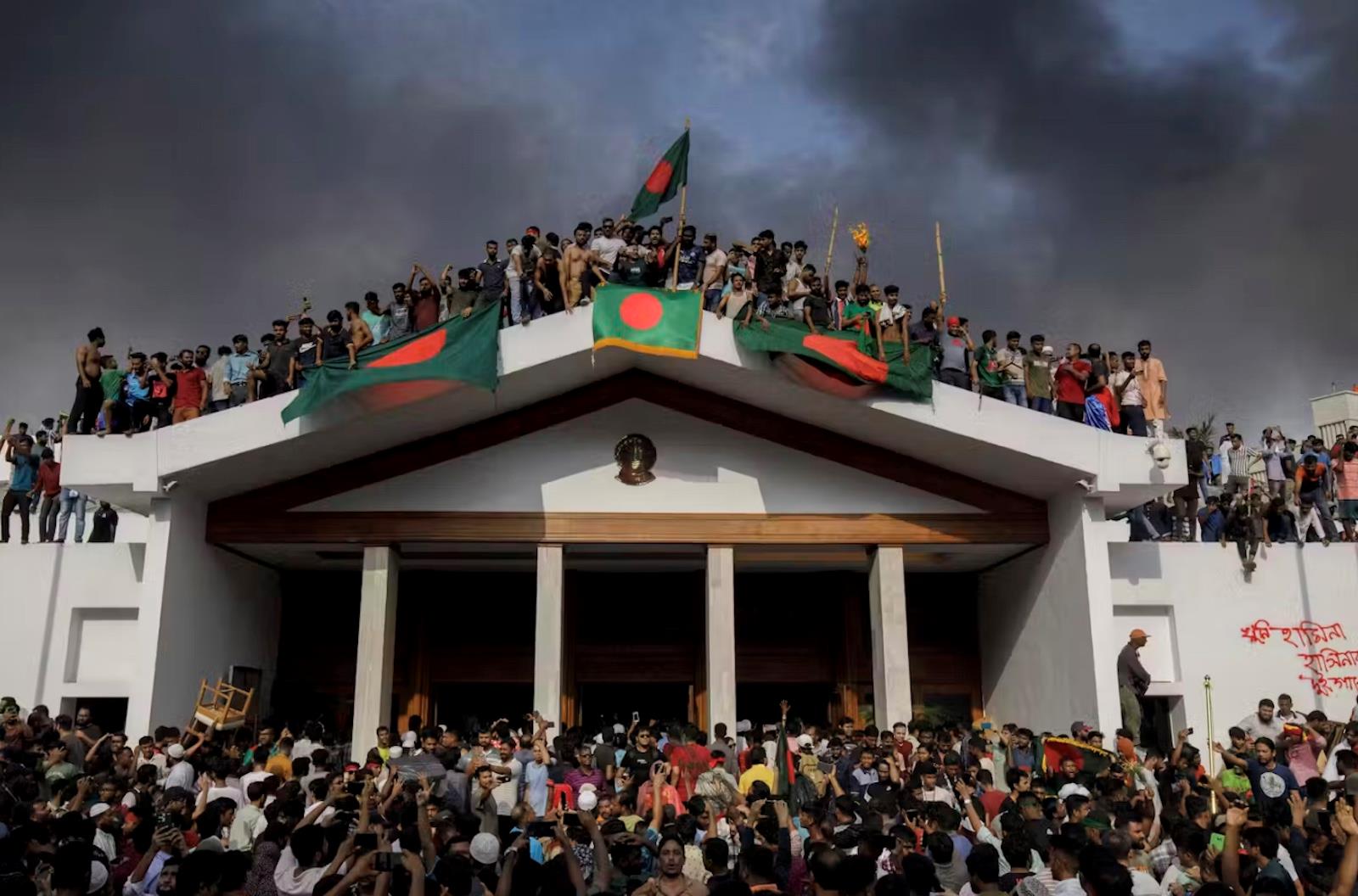
Bangladesh As Color Revolution On India's Doorstep
In a matter of a few hours, the former“Iron Lady” of Dhaka found her position, and perhaps prospects for her life itself, quite unviable, when the head of the armed forces (who happened to be her niece's husband) communicated the troops' refusal to fire at“student” protestors who were gathering in force across the country.
Adding salt to the injury, various democracies such as the United States and the United Kingdom refused or revoked her visa after the events that brought former Grameen Bank chief and Nobel prize winner Muhammad Yunus to power as interim prime minister.
Such epochal events in a country of nearly 175 million have hardly raised much more than a shrug even amidst a relatively slow (political) news cycle in August across the Western world.
Perhaps the media are more focused on the summer Olympics but clearly the events in Dhaka would assume much greater importance if violence, already targeting the country's minority Hindus, were to spiral out of control into a full-blown civil war.
In particular, the hand of the US government is discernible in the rapid unraveling of events since the middle of June when student protests around a new job quota system of descendants of the country's freedom struggle soon erupted into broader protests by a population that had grown increasingly sick of high inflation and high unemployment of educated young people.
In line with the toolkit used in the“Spring Revolution” countries ranging from Tunisia to Egypt, mass simultaneous protests erupted around Bangladesh with acts of violence targeting only minorities (considered closer politically to Hasina's Awami League party).
The police and the army were called to help but proved utterly ineffective against the humongous mobs gathered. Despite various incidents of tear gassing and even shoot-at-sight orders (which were hardly carried out in practice as police preferred to fire in the air rather than at protestors directly), emboldened mobs had threatened to march on the capital this week, prompting Hasina's ignominious exit.
Why would the US bother ?Given the country's relatively small geographical presence that belies its population and its lack of substantial resources, the primary question for any reader would be why the US would even bother to trigger a coup in the country.
The answer lies in the country's location, in the strategic eastern part of India with significant proximity to China. That is not all – being essentially a riparian state serviced by two of the world's biggest rivers, the Ganges and the Brahmaputra, which together form one of the world's most fertile deltas (explaining the population density) – the country's ports have long attracted naval powers ranging from the British, Japanese and Russians, to more recently the Chinese and Americans at different points in time.
At the moment, the primary US interest in the country is to establish a service port for mid-size US naval vessels that could help America manage naval operation risks caused by China's access to ports in neighboring Myanmar and offer logistic services to friendly powers in the region without needing any approval or participation from India.
To be sure, over the longer term, there is a significant strategic geopolitical advantage to be garnered from taming and managing the riparian economy of Bangladesh, with the northern parts of the country offering perfect topography for aerial incursions into the soft underbelly of China to the southeast of the Tibetan-Sichuan region, an area that China has ruled to the point of being entirely complacent about potential military risks.
An inkling of those political and military risks has come from India since the failed Doklam incursions of 2017, that has in turn triggered significant geopolitical activity around Bhutan and Nepal by the Chinese as they continued to intensify pressure on India before effectively achieving unparalleled superiority by the beginning of 2022.
With India on the back foot, the US clearly feels the need to step in – and if Delhi-based observers are to be believed, step up the ante.

Legal Disclaimer:
MENAFN provides the
information “as is” without warranty of any kind. We do not accept
any responsibility or liability for the accuracy, content, images,
videos, licenses, completeness, legality, or reliability of the information
contained in this article. If you have any complaints or copyright
issues related to this article, kindly contact the provider above.





















Comments
No comment